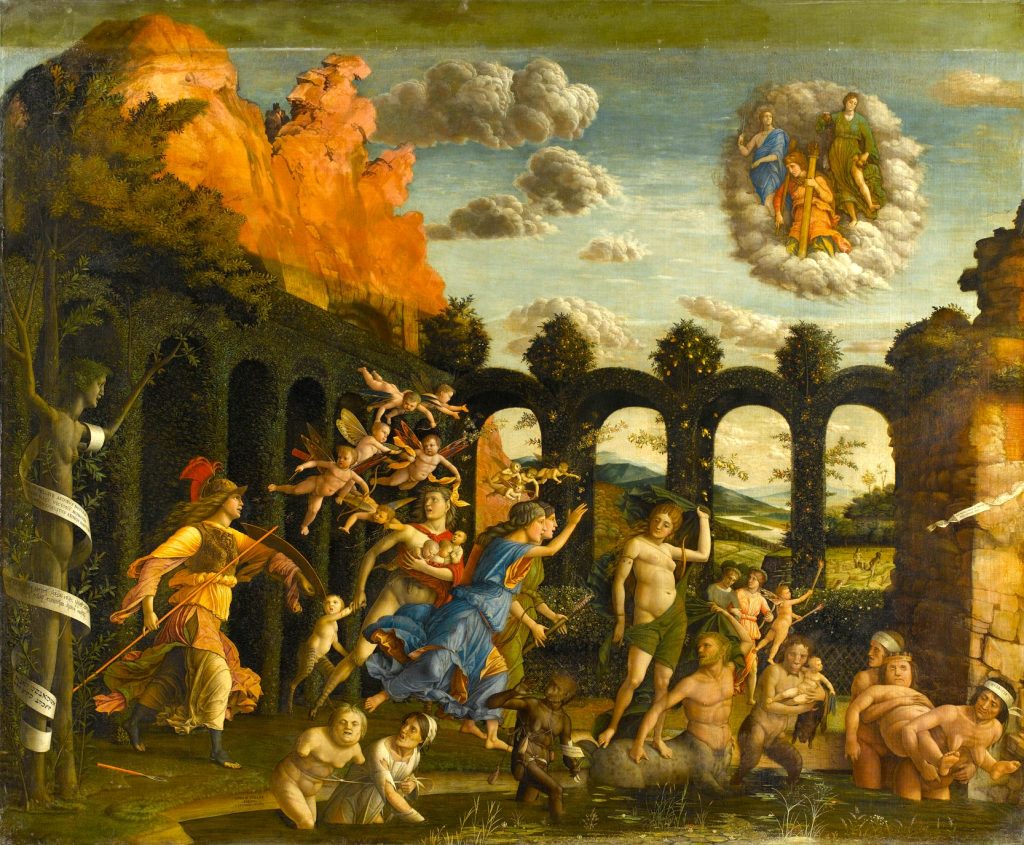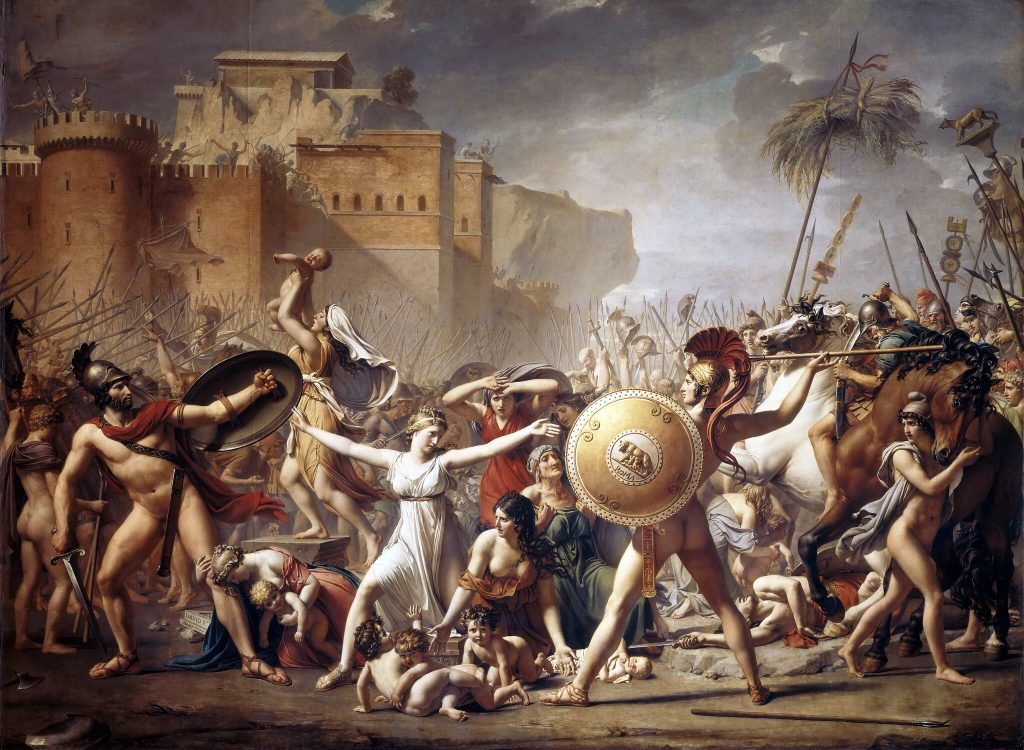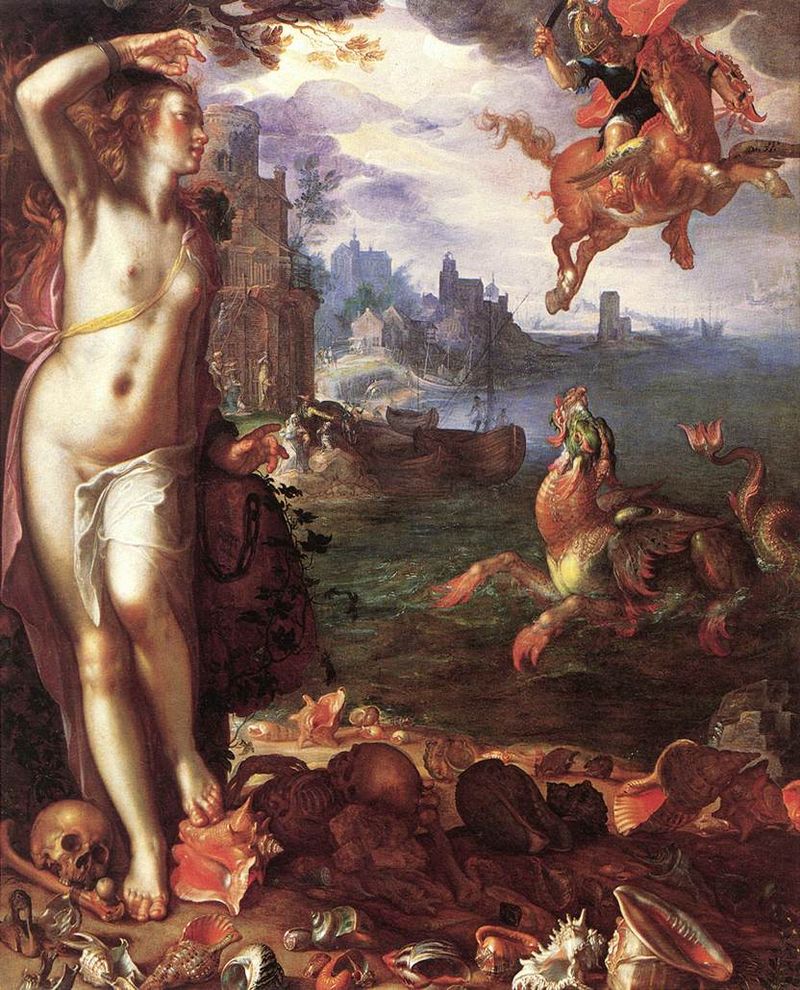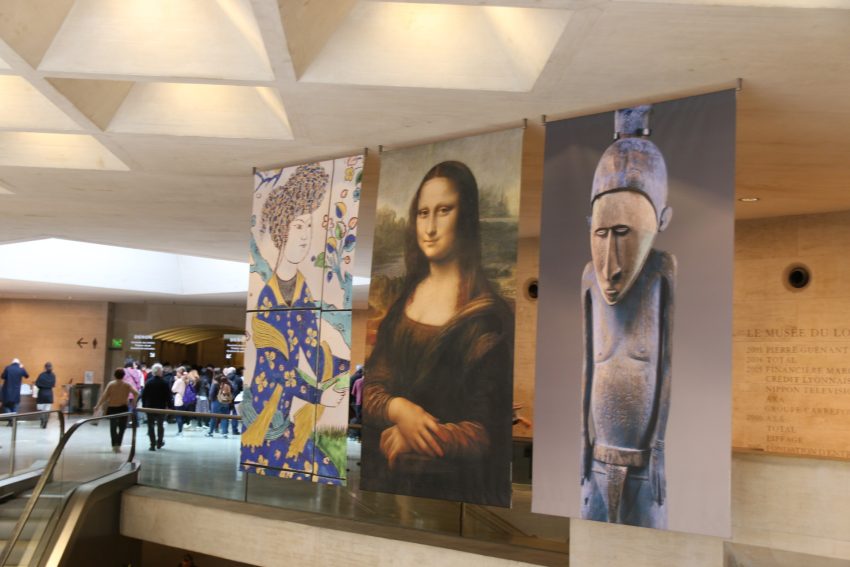Myths have been in human culture for at least as long as painting has. For thousands of years, mythology has played a vital role in the organization of human society, from its foundational structure to everyday moral values and social expectations.
Above all, Myths are teachers. Their fundamental purpose is to guide people who find themselves in certain challenging situations that arise throughout life. According to mythology, these situations are timeless and occur in everyone’s life at one point or another.
Myths act as an example of how to overcome these challenges. In painting, whether Greek Goddesses paintings or mythological heroes, artists have always found inspiration in these stories. As a result, The Louver Museum in Paris, France, currently has one of the most significant collections of mythological paintings today, with dozens of famous pieces on display.
1. The Triumph of The Virtues by Andrea Mantegna

The Triumph of The Virtues, or Triumph of Virtues as it is also known, is a Renaissance period painting by Italian artist Andrea Mantegna. Painted in 1502, Mantegna was inspired to portray the Greek myth of Minerva expelling the vices from the garden of virtues.
In Greek mythology, Minerva was one of the most important Greek goddess paintings. She represented several things to the Greeks and the Romans, but most importantly, she was the Goddess of War, her shield and spear. Minerva fought for those in need of justice or a fair trial.
In this Greek renaissance painting, Minerva chases away Idleness and sexual desire. Although portraying a Greek myth, the painting is heavily influenced by the catholic idea of purity and sin. It proudly sits in the Louver museum as a centerpiece in their famous mythology collection.
2. The Intervention of the Sabine Women by Jacques-Louis David

The painting of the Intervention of the Sabine Women tells the tale of the myth of the founding of Rome. The myth is controversial, primarily when judged by today’s standards. Nevertheless, the painting is one of the most epic retellings of a myth ever painted.
The story states that the founders of Rome invited the Sabines to a feast and then abducted their women to have sufficient numbers for the growth and prosperity of their city-state. But unfortunately, the story has never been proven true or not- like most myths are more so meant to represent certain principles rather than actual events.
On the Roman side, The Intervention represents conquest and its winnings, while the Sabine side represents self-sacrifice in protecting one’s livelihood. Both were viewed as essential ideals for the Romans. David painted the Intervention during a time of unrest in France. He may have wanted to use the myth to mirror what he felt was happening to his own country. However, this is merely one interpretation.
3. The Barque of Dante (Dante and Virgil in Hell) by Eugene Delacroix

Another of the Louvre paintings highlighting another important cultural myth is Eugene Delacroix’s Romantic rendering of Dante’s journey through hell. It was Delacroix’s first major painting and is regarded as one of the paintings that contributed to the transition from Neoclassical to Romanticism.
In the painting, Dante and the poet Virgil are on a raft traveling down the river Styx from the city of the Dead while being accosted by tormented souls. The painting is said to be influenced by Theodore Gericault’s Raft of Medusa painting which also sits in the Louver museum in Paris.
Delacroix’s painting of Dante’s journey focuses on the fifth circle of Hell, which is the stage for the sinners guilty of anger and wrath. This can be seen poignantly represented in the demonic faces and distorted bodies of the tortured souls and their hostile attempt to seize Dante’s boat.
4. The Wedding at Cana by Paolo Veronese

The Wedding at Cana is a wonderfully lavish and incredibly detailed depiction of the Christian myth of Jesus turning water into wine. Painted in a High-renaissance style, the beauty and craftsmanship of this Greek mythology painting are enough to rival other great masters such as Leonardo Da Vinci and Raphael.
The painting is awash with the sea of characters attending the wedding, and it is easy to find yourself getting lost in the painting. As a High-Renaissance artist, Veronese emphasized human proportions’ inherent beauty, which is on full display here.
Like Da Vinci’s Last Supper mural, Jesus sits at the center of the table with a host of characters, who are milling around him and enjoying the festivities of the wedding. As far as mythology renaissance paintings go, The Wedding at Cana is undeniably one of the best.
5. Perseus Freeing Andromeda by Joachim Wtewael

In this Greek mythology painting, the Greek hero Perseus travels home after successfully slaying the formidable Medusa monster. Unfortunately, Perseus finds the princess Andromeda chained to a rock on his way home. She is about to be sacrificed to appease Poseidon, who had sent a sea monster as divine punishment.
The beautiful painting reenacts the moment when Perseus is about to slay the sea serpent and save the princess. All the tropes of the hero myth are present here, from the fearsome monster that must be slain to the reward of the beautiful princess and castle for doing so.
This Greek myth has been told repeatedly throughout the centuries and is said to represent the idea of the need for people to go out and face their fears. Wtewael’s painting is a call of inspiration to face life like a hero and conquer the evil in both the world and ourselves.
The philosophical topics found in mythology and their artistic representations are genuinely fascinating. On the one hand, they represent deeply personal themes targeted toward the individual while simultaneously tackling questions such as the creation of the universe and our place within it. The Louvre has an excellent collection of mythology paintings on display that is worth checking out if you ever find yourself in Paris.
Myths have been in human culture for at least as long as painting has. For thousands of years, mythology has played a vital role in the organization of human society, from its foundational structure to everyday moral values and social expectations.
Conclusion
Above all, Myths are teachers. Their fundamental purpose is to guide people who find themselves in certain challenging situations that arise throughout life. According to mythology, these situations are timeless and occur in everyone’s life at one point or another.
Myths act as an example of how to overcome these challenges. In painting, whether Greek Goddesses painting or mythological heroes, artists have always found inspiration in these stories. As a result, The Louver Museum in Paris, France, currently has one of the most significant collections of mythological paintings today, with dozens of famous pieces on display.

